Succulents are a great option for those who are just starting to grow plants at home. They are easy to care for and adapt easily to environments with little light and water.
In this article, we’ll introduce you to the types of succulents that are ideal for beginners in plant growing. You’ll find that there are a wide variety of succulents available, each with its own characteristics and care needs.
Some are small and discreet, while others are large and eye-catching. All of them, however, are perfect for those who are just starting out in the world of plant growing.
So, if you want to start growing your own plants at home but don’t have much experience, this list is perfect for you. Check out the 10 types of succulents that are ideal for beginners and choose the one that best suits your style and space.
Easy Succulents to Grow Indoors
Succulents have become super popular in recent years, and for good reason. There are hundreds of unique varieties, and just about anyone can grow them, including beginners. Their special water-storing tissues allow them to survive in environments that are too dry for most other plants, so they’ll do just fine even if you forget to water them for a while.
As suculentas também prosperam em ar seco e temperaturas quentes, que a maioria das casas já possui, então você não precisa mudar nada para cultivar uma em sua sala de estar.
If you’re a new plant parent, here are some of the best indoor succulents to start your collection. They adapt well to indoor living and are easy to find at garden centers and nurseries.
1. Donkey Tail
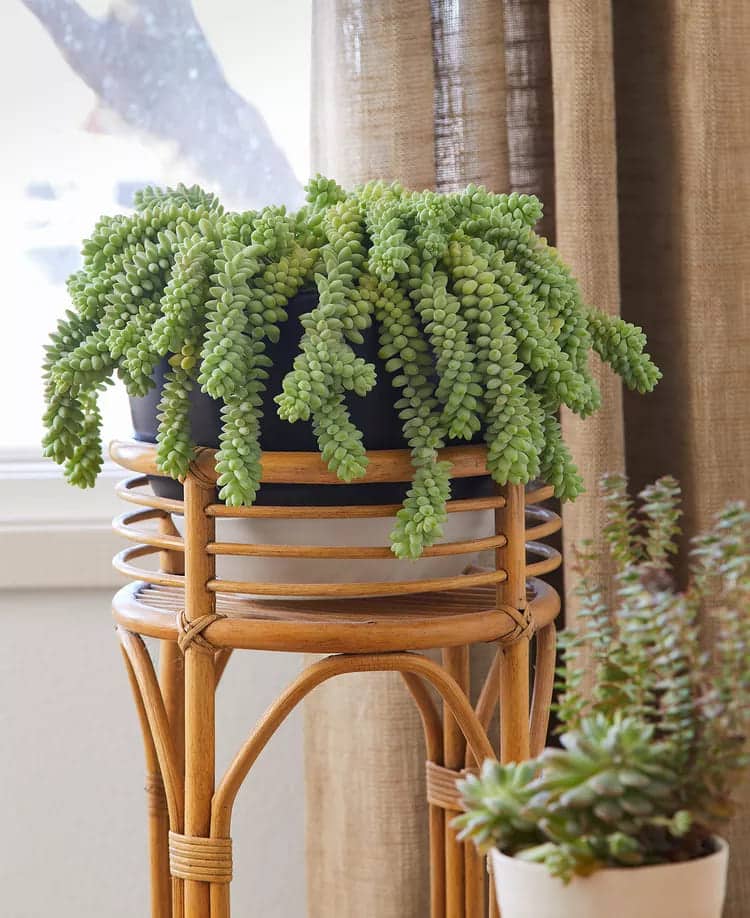
Burro’s tail (Sedum morganianum) is a succulent that looks best in a hanging basket or container on a ledge, shelf, or plant stand so it can hang down. Each stem can grow up to three feet long and is covered in grayish-green leaves that are about the size and shape of a plump grain of rice. The leaves are fragile and fall off easily, so it’s best to avoid handling this plant as much as possible. Native to Mexico, Burro’s tail prefers bright light for best performance. Allow the soil to dry out between waterings, especially in winter.
2. Christmas Cactus
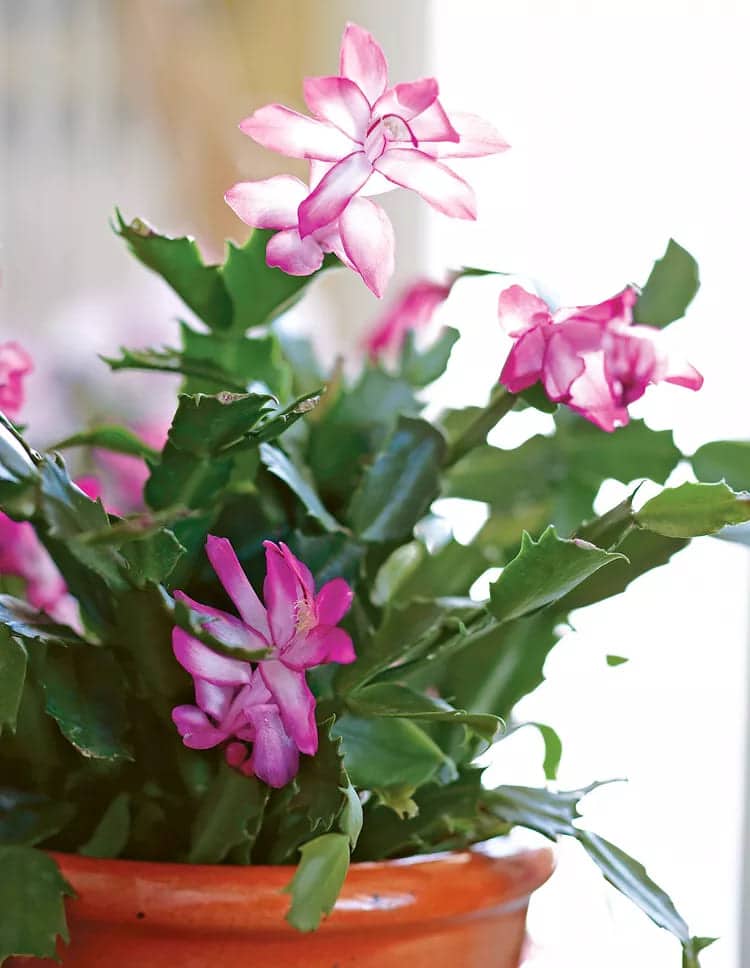
Unlike other cacti, the Christmas cactus (Schlumbergera xbuckleyi) doesn’t have sharp spines. Its flat, fleshy, segmented stems can grow to several feet long, drooping in a way that has earned it the nickname crab claw cactus. It prefers a bit more moisture, so water whenever the top inch of soil feels dry. Keep it in bright light near a window, and this plant will likely reward you with winter blooms.
3. Hens and Chicks
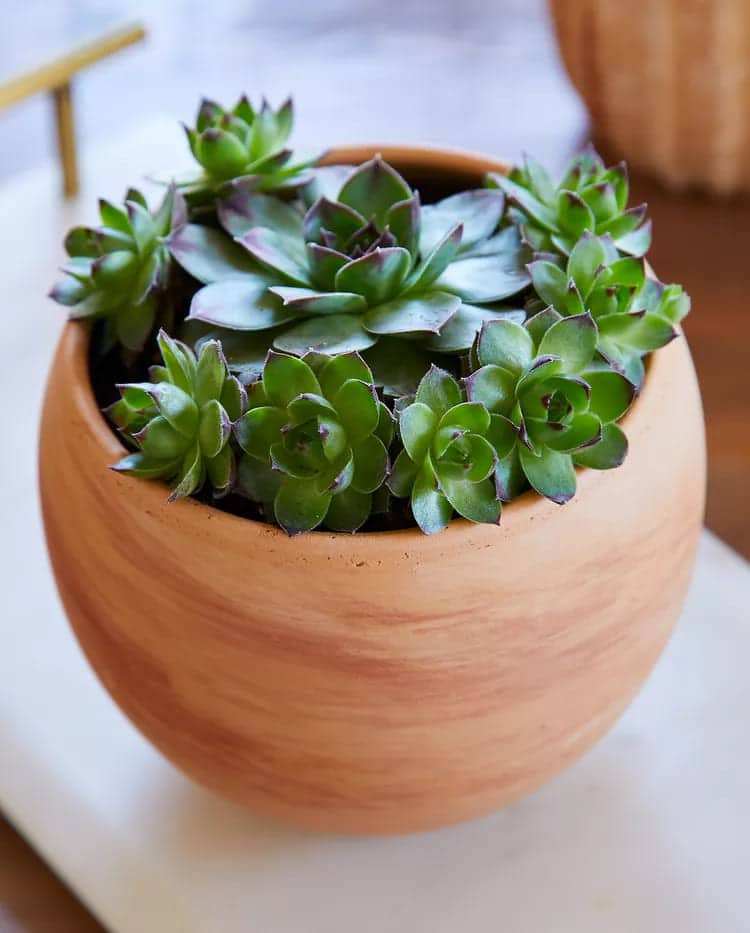
Two succulent plants share the common name hens and chicks. They produce “chicks”—small, identical plants that are slightly offset from the parent (the hen). Echeveria elegans forms flat rosettes with rounded edges and bell-shaped flowers. Sempervivum tectorum forms rosettes with flatter, more pointed leaves. Both should be allowed to dry out slightly between waterings and thrive in bright light.
4. Jade Plant

The jade plant (Crassula ovata) is a favorite because it’s so easy to grow. With its thick, glossy green leaves, sometimes tinged with red at the edges, the jade plant can grow to be several feet tall, but usually stays around three feet tall when grown indoors. Allow the soil to dry out completely between waterings to keep it healthy.
5. Aloe Vera
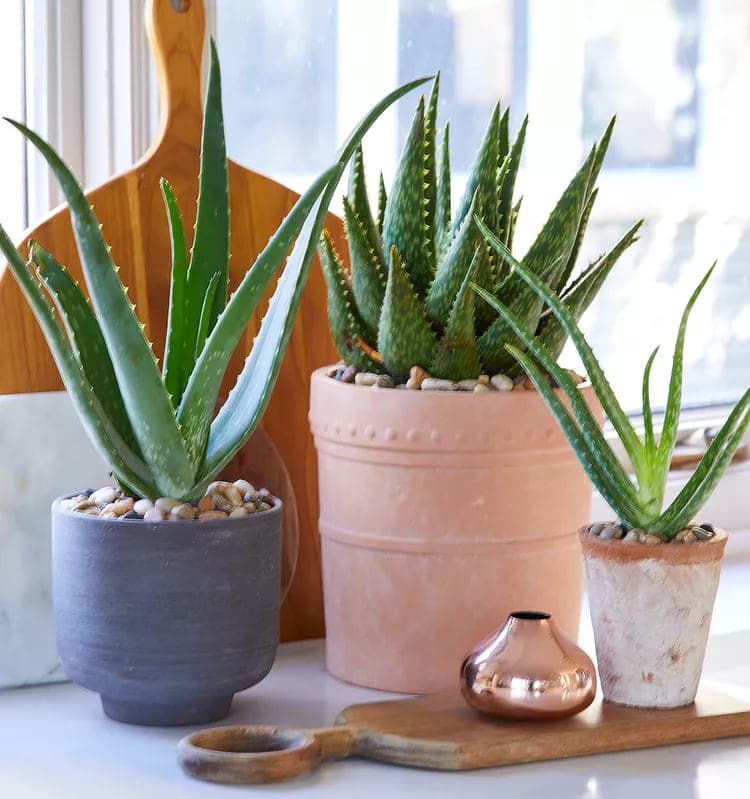
Aloe vera grows as a cluster of long, thin leaves on a short stem, producing more leaf clusters over time. It is known for its healing sap used in sunburn treatments. Aloe vera prefers to be kept on the drier side and does best in bright light. Beware of the sharp teeth along the edges of the leaves.
6. Panda Plant
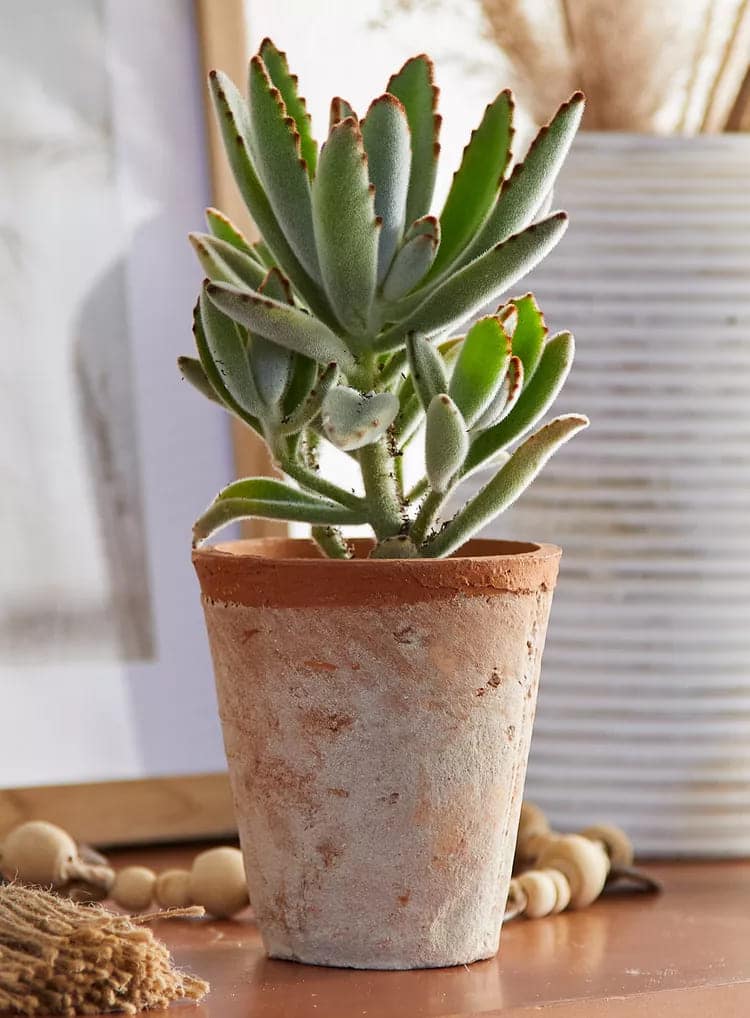
The panda plant (Kalanchoe tomentosa) is quite distinctive with its fuzzy, grayish-green leaves covered in soft, silvery hairs and tipped with brown spots. They grow slowly, reaching about six feet tall. Give it bright light and let the soil dry out between waterings.
7. Ponytail Palm

Ponytail palms (Beaucarnea recurvata) aren't actually palms, but they look like them. With a long, woody trunk and a tuft of leathery leaves, they can grow up to five feet tall indoors. The swollen base of the trunk stores water. This plant does best in bright light and low humidity.
8. Snake Plant
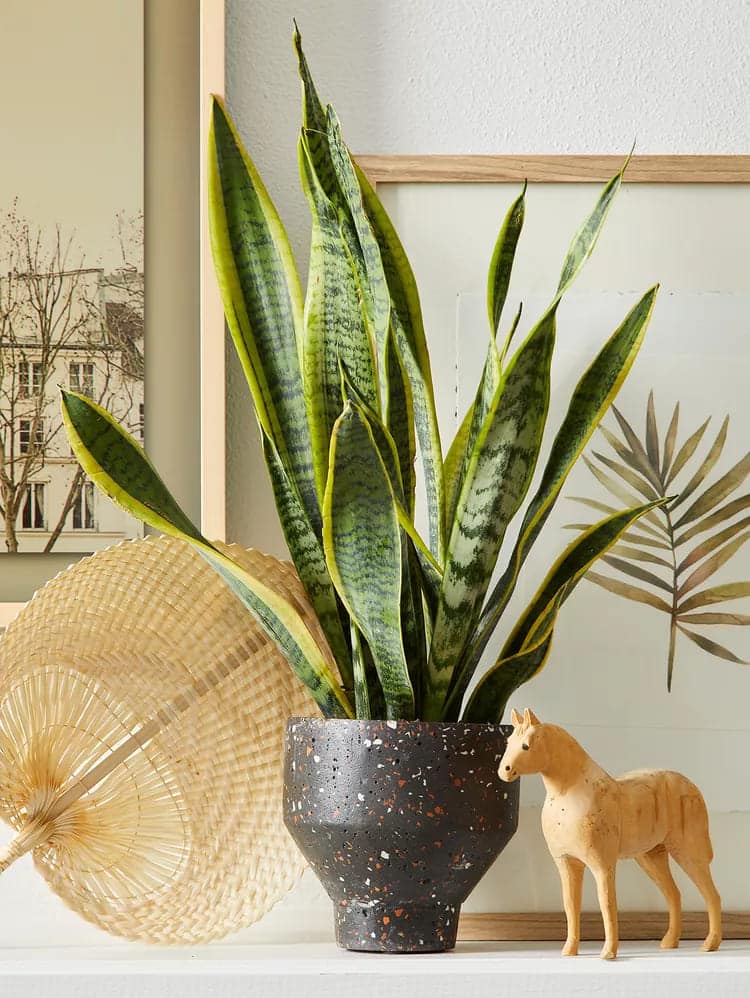
Snake plants (Sansevieria trifasciata) can survive weeks without light or water. Their thick, stiff leaves grow upward, reaching about three feet in length. They grow in dense clumps that fill the pot, but they are easy to divide. Although they tolerate low light, they do best in medium to bright light.
9. African Milk Tree
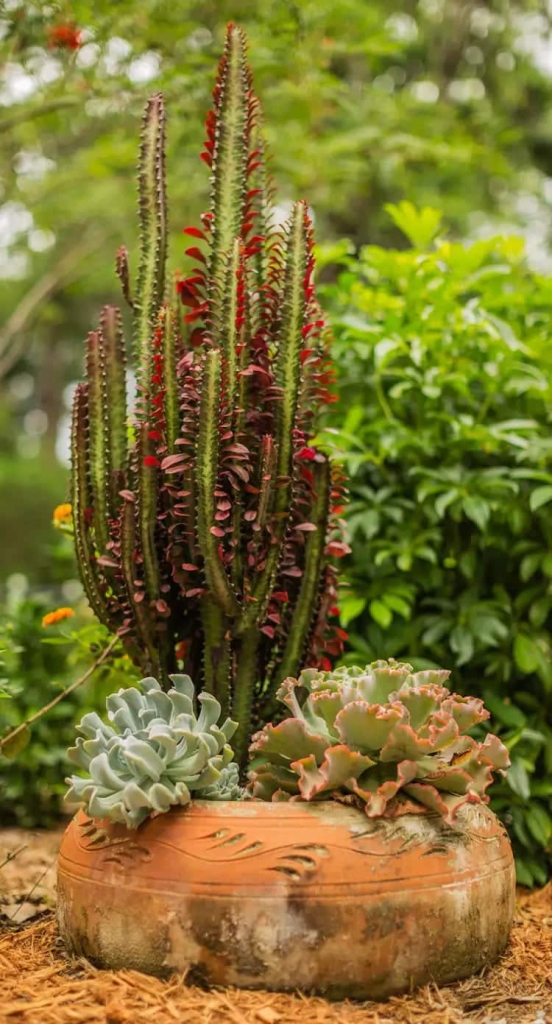
The African milk tree (Euphorbia trigona) can grow to nearly 10 feet tall. It produces upright, triangular, branched stems with short spines and small leaves at the tips. Keep it in bright light with evenly moist soil.
10. Zebra Haworthia
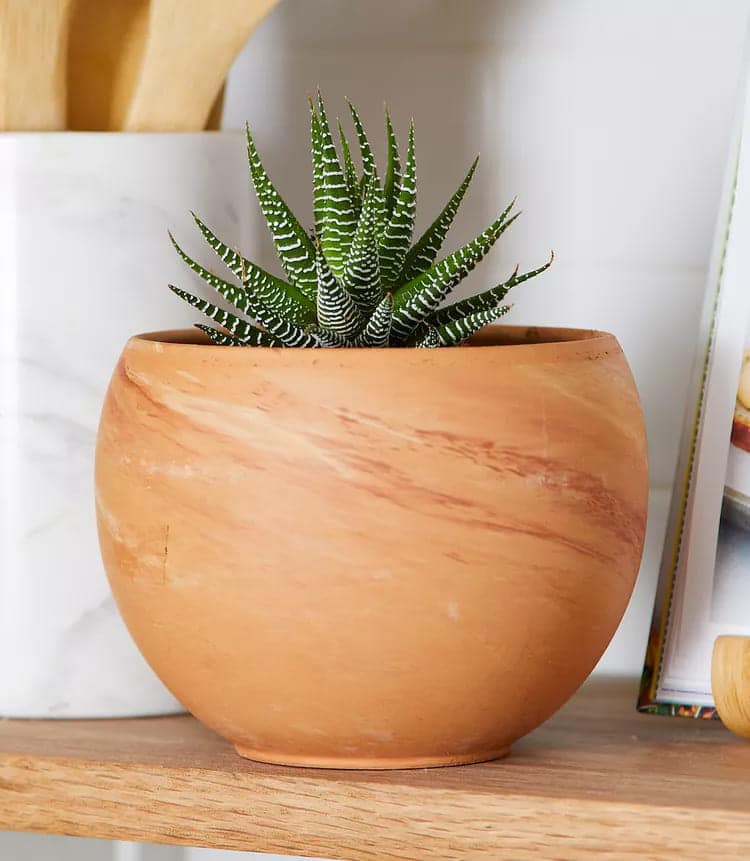
The zebra haworthia (Haworthia fasciata) has striking stripes and spiky foliage. It’s very easy to grow and is commonly available at garden centers. Place it near a window where it gets indirect light and let the soil dry out completely between waterings. It’s a good choice for terrariums or to grow alongside other succulents.
How to Choose the Ideal Succulent for Beginners
Choosing the right succulent can seem like a challenge with so many options available, but a few factors can help simplify the decision. Here are some tips for choosing the perfect succulent for beginners:
1. Consider the Amount of Light Available
Succulents love light, but some species are better suited to low-light environments. If your home doesn’t get a lot of natural light, consider species like the Snake Plant or Zebra Haworthia, which tolerate low light well.
2. Think About the Space You Have
Some succulents grow quite large, while others remain small and compact. If you have limited space, opt for smaller species like the Zebra Haworthia or Hens and Chicks. If you have plenty of space, the African Milk Tree or Ponytail Palm are great choices.
3. Check Ease of Care
All succulents are relatively easy to care for, but some are more resilient than others. Species like the Jade Plant and Aloe Vera are known for being nearly indestructible, making them ideal for beginners.
Tips for Caring for Succulents
Now that you’ve chosen your succulents, it’s important to know how to care for them properly. Here are some essential tips to keep your succulents healthy and happy:
1. Water in Moderation
The golden rule for succulents is to water less, not more. Let the soil dry out completely between waterings and avoid letting water collect in the saucer under the pot. During the winter, reduce the frequency of watering even further.
2. Provide Adequate Light
Most succulents need bright light to thrive. Place your plants near a window where they can get direct sunlight for a few hours a day. If your home has little natural light, consider using grow lights.
3. Use the Right Soil
Succulents need soil that drains well. Use a mix specifically designed for cacti and succulents, or make your own by adding sand or perlite to regular garden soil.
4. Fertilize with Care
While they don’t need much fertilizer, succulents can benefit from a little food during the growing season (spring and summer). Use a balanced, diluted fertilizer to avoid overfeeding.
5. Monitor Pests and Diseases
Succulents are relatively pest-resistant, but can be affected by aphids, mealybugs, and fungus. Inspect your plants regularly and treat any infestations immediately with insecticidal soap or neem oil.
Succulent Propagation: Multiply Your Plants
One of the most fun parts of growing succulents is how easy they are to propagate. Most succulents can be propagated from leaves, cuttings, or offsets. Here are some simple techniques for propagating your succulents:
1. Propagation by Leaves
Some succulents, such as Echeveria and Panda Plant, can be propagated from leaves. Simply remove a healthy leaf, let it dry for a few days until the cut end becomes calloused, then place it in well-draining soil. Within a few weeks, new roots and shoots will begin to appear.
2. Propagation by Cuttings
For succulents like the Jade Plant, you can cut a healthy stem, let the end dry, and plant the cutting in soil. Be sure to water sparingly until the new plant is established.
3. Propagation by Offsets
Many succulents, such as Hens and Chicks and Aloe Vera, produce offsets or “babies” around the parent plant. Simply remove the offsets carefully and plant them in new pots with suitable soil.
Succulent Decoration Tips
In addition to being easy to care for, succulents are extremely versatile and can be used in a variety of creative ways to decorate your home:
1. Terrarium Gardens
Succulents are perfect for terrariums, where you can create decorative mini gardens. Use an open glass container and fill it with a layer of pebbles for drainage, followed by soil and your favorite succulents. Add moss and small decorations for a special touch.
2. Arrangements in vases
Combine different types of succulents in a single pot for an interesting and colorful arrangement. Experiment with different shapes, textures, and colors to create an eye-catching look.
3. Green Walls
Para um impacto visual maior, considere criar uma parede verde com suculentas. Use um quadro vertical ou um painel de parede com compartimentos para plantar suas suculentas. Essa é uma excelente maneira de adicionar verde a espaços pequenos.
4. Table Decoration
Small succulent pots are perfect for decorating dining tables, coffee tables, and shelves. They add a touch of nature without taking up too much space.
Conclusion
Succulents are an excellent choice for beginner gardeners because of their hardiness and ease of care. Coming in a wide variety of shapes, colors, and sizes, they make a charming addition to any space. By following the tips in this guide, you’ll be on your way to successfully growing and enjoying your succulents. Good luck and enjoy your new plants!
Did you like this amazing tip? If so, share it with your friends and on your social networks. Leave your comment below and your suggestions. Receive it daily here on our website. Blog of ideas and tips free and follow us on Google News too. Thank you!